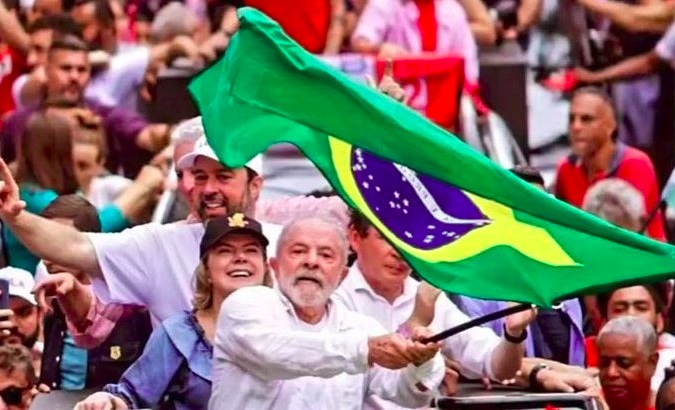The primary focus of Modi and Lula governments has been on delivery for the majority. Both are acutely aware that the real majority in an emerging economy is the poor/lower middle class.
When politics is viewed through a conventional lens of Right and Left, there is absolutely nothing in common between Prime Minister Narendra Modi and Brazil’s President-Elect (and former two-term President) Luiz Inacio Lula da Silva. But sometimes, it is useful to view politics outside the usual framework. In the case of Modi and Lula, it is particularly insightful, because both are hugely successful mass leaders who govern for the real majority in their countries, the poor and lower middle classes, while also paying heed to the minority of middle and upper middle classes, who are more aspirational.
Viewed in the Left/Right binary of politics, Modi and Lula come from opposite political traditions. However, their personal stories have much in common. Both Modi and Lula were born into relative poverty and both have risen to the top of their respective parties and to the top job in their countries through hard work and merit. Their lived experience of poverty and how to emerge from it is an important influence on their governing philosophies, perhaps more than the party ideology is.
Interestingly, both Modi and Lula were initially cast in public perception as belonging to the firm Right and firm Left of their respective political parties. Lula, despite early success (he was elected as the equivalent of an MLA in the state of Sao Paulo at the age of 40), struggled to mainstream himself, losing three consecutive Presidential elections in 1989, 1994 and 1998 because of the perception of being too left wing. He then deliberately and strategically moderated his image towards the Centre to finally get elected in 2002 and re-elected in 2006 and 2022. Modi too had success regionally becoming Chief Minister of Gujarat in 2001 and winning re-election in 2002, 2007 and 2012. But, for a long period, he was viewed as too right wing to occupy national office. However, Modi also worked on moderating his image and by 2013, he was able to be anointed as Prime Ministerial candidate of the BJP, subsequently winning two successive majorities in 2014 and 2019.
While strategic management of perceptions and their natural charisma played a part in making both men electable to the highest offices in their respective country, it is their record in government which has ensured that their popularity endures. This is what differentiates them from “populists” of the Left and Right who take office because of charisma and perception, but fail to endure because their governments do not deliver enough positive outcomes to peoples’ lives. They either get caught in rhetoric or chaos.
The primary focus of Modi and Lula governments has been on delivery for the majority. Both are acutely aware that the real majority in an emerging economy is the poor/lower middle class. Unsurprisingly, their governments have focused on delivering for this majority. When Lula assumed office in 2003, he introduced the two landmark social programmes of Fome Zero (Zero Hunger) Bolsa Familia (Family Allowance). The latter was in fact one of the first direct benefit transfers (DBT) scheme implemented on a large scale in an emerging economy. It was a conditional cash transfer scheme, where poor families got a cash allowance subject to getting their children vaccinated and attending school. If either of the conditions was not met, the cash transfer was stopped. Bolsa Familia was a hugely successful programme, which helped eliminate extreme poverty, while raising health and education standards.
A decade later, Prime Minister Modi made DBT the focus of his first term in office. In India’s case, DBT was based on the foundation of the opening of a Jan Dhan bank account, Aadhaar for authentication and mobile phones for transfer (the JAM trinity). This transformed a system, which was infamous for leakages and corruption in anti-poverty schemes, to an efficient and effective system, which helped lift hundreds of millions out of poverty.
While delivering for the poor, Modi and Lula also followed responsible fiscal policy and pursued structural reform in order to create a conducive environment for investment. For the aspirational segment of the population, which may be a minority in an emerging economy, this is very important as they are looking for greater prosperity and advancement and not just a move out of poverty. Thus, both leaders retain an appeal to the poor and the not so poor, which enables them to command a solid base of support.
The challenge for Lula in his third term—a challenge which also confronts Modi in his second term—is to deliver rapid growth and opportunity to a population that has become less poor than when he first took office and where the majority may soon lie in the middle classes rather than the poor. In India, Modi has brought a strong focus on building a competitive manufacturing sector (via policies like PLI, labour reform and creation of physical infrastructure), which is the best way to create good jobs for those still stuck in low productivity jobs in agriculture. Lula could pick some lessons from that just as Modi would have learnt from Brazil’s experience in DBT.
In vibrant democracies like India and Brazil, even the most popular leaders have to constantly deliver to retain popularity and win office.
Dhiraj Nayyar is Chief Economist, Vedanta.

